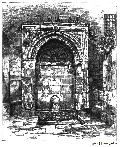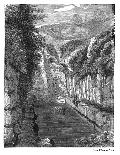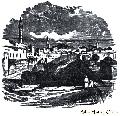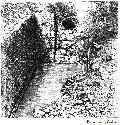Illustrated Bible History
Ancient Israel Monuments - Pools And Fountains

|
Pool of Bethesda Illustration |
|---|---|
| An illustration of the Pool of Bethesda, located on the eastern side of Jerusalem. The water source of the pool comes from a nearby spring and this had five porches. Bethesda means house of mercy, so the pool is also known as Bethesda Pool Of Mercy. It was here at the Pool of Bethesda that Jesus healed the man who was lame for thirty-eight years. | |

|
Public Fountain |
| Illustration of a public fountain at Jerusalem. This kind of fountain is where women or girls fill their water jars. The fountain is the site for valuable spring water. A structure of mason work, more or less costly or ornamental has been erected to save the water from waste and make it more accessible. The spot is also ornamented with shade trees. | |

|
Pool of Solomon |
| Pool of Solomon in the Valley of Etam near Betlehem. | |

|
Pool of Siloam |
| Pool of Siloam looking North. | |

|
Pool Of Bethesda |
| The pool of Bethesda at the sheep gate of Jerusalem. This pool was built round with porches for the accommodation of the sick who sought benefit from the healing virtues of the water. | |

|
Fountain of the Virgin |
| The Fountain of the Virgin in Jerusalem. This is the perennial source from which the Pool of Siloam is supplied and got its name from legends saying that the virgin Mary washed the swaddling clothes of Jesus in this fountain. | |

|
Pool of Siloam Illustration |
| Illustration of the present Pool of Siloam. | |

|
Pools of Solomon |
| The celebrated Pools of Solomon in Wady Urias, between Hebron and Bethlehem, called by the Arabs as el-Burak. Consisting of three pools which were partly hewn out of the rock and partly built with masonry, but all lined with cement, and formed on successive levels, with conduits leading from the upper to the lower and flights of steps from the tops to the bottom of each. |
